-
Call Us:1.800.561.4019
Newsletter
For a Free Quote...
Latest Blog Posts
Blog Categories
Telnet Networks News
Five Steps to Building Total Visibility and Control of your Cloud Infrastructure using StableNet®
Modern enterprise applications are engineered for agility and are heavily virtualized for frequent deployment over scalable IT infrastructure environments. The benefits of virtualized public\private cloud environments include flexibility, efficiency, and agile business enablement. Multiple factors such as varying workload requirements, or ‘just-in‐time’ provisioning require an accurate and scalable muti-functional management suite to mitigate the risk of compromising the environment. Infosim’s StableNet® unified management system provides the total visibility and control required for your cloud hosting infrastructure environment.
Step 1 - WAN Access to your Cloud Environment
The Wide Area Network (WAN) is a key component in the delivery path of your cloud services. It is essential that the WAN routing devices that allow your public and private cloud‐based traffic to flow in\out of your hosting  environment have the appropriate management array of functionality in place to deliver the service visibility and application performance needed for measuring the service availability and ultimately the customer experience. Optimization of the WAN is a necessity for application prioritization and acceleration delivery; therefore, maximum visibility and control of the WAN access points to and from your cloud environment are absolutely paramount for maintaining high service availability.
environment have the appropriate management array of functionality in place to deliver the service visibility and application performance needed for measuring the service availability and ultimately the customer experience. Optimization of the WAN is a necessity for application prioritization and acceleration delivery; therefore, maximum visibility and control of the WAN access points to and from your cloud environment are absolutely paramount for maintaining high service availability.
StableNet® is a unified management solution and is therefore ideally suited for cloud infrastructure management. For the WAN element of your cloud hosting environment StableNet® provides an array of multi‐functional capabilities that deliver the complete wrap required to monitor, police, and control your environment proactively. For the WAN infrastructure this includes:
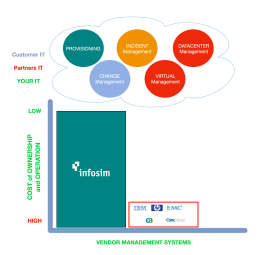
- Inventory Management (e.g. Device types, cards, serial numbers etc.)
- Topological Management (e.g. Network Topology Visualization)
- Configuration Management (e.g. Config Backup\Restoration)
- Policy Management (e.g. Configuration Policy & Governance Control)
- Change Control (e.g. Configuration Lock-‐Down Change Control)
- Performance Management (e.g. Bandwidth, QOS, System, Interface Performance with Threshold Management)
- Fault Management with RCA (e.g. Fault Correlation Management with unique Root‐Cause‐Analysis)
- Service Visualization (e.g. Visualize your entire cloud service environment)
Having this level of management control is required for a truly complete proactive management service for your private and public cloud WAN access. With traditional or legacy element management systems, costs can escalate when having to procure and support this number of functional management systems, which ultimately increases in CAPEX and OPEX.
However, StableNet® is a unified management system with a wealth of integrated functionality that therefore makes it extremely cost effective, driving down CAPEX and OPEX requirements while differentiating your management capabilities and keeping your operating costs to a minimum.
Step 2 - LAN Infrastructure Interconnectivity
The Local Area Network (LAN) is a critical element for network traffic delivery within the cloud hosting or datacenter. Your entire WAN access and cloud server hosting platform environment will have been interconnected to 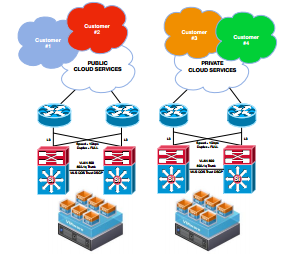 your physical and virtual LAN switching network infrastructure. The LAN switching element is the backbone of your cloud hosting environment so any problems within this area will seriously affect your customers and partners IT services. Implementation of a management system that has a complete proactive monitoring solution will reduce the risk of potentially damaging service outages.
your physical and virtual LAN switching network infrastructure. The LAN switching element is the backbone of your cloud hosting environment so any problems within this area will seriously affect your customers and partners IT services. Implementation of a management system that has a complete proactive monitoring solution will reduce the risk of potentially damaging service outages.
As stated in the previous section, StableNet® is a unified management solution and is therefore ideally suited for cloud infrastructure management. For the LAN element of your cloud hosting environment StableNet® provides an array of multi‐functional capabilities that provide the complete wrap required to monitor, police, and control your LAN environment proactively as well as visualize the entire hosting environment from a single view detailing all LAN interconnection to both the WAN access points and the server hosting systems. The LAN infrastructure includes:
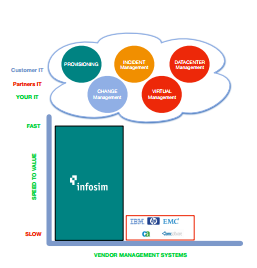
- Inventory Management (e.g. Device types, cards, serial Nos etc.)
- Topological Management (e.g. Network Topology Visualization)
- Configuration Management (e.g. Config Backup\Restoration)
- Policy Management (e.g. Configuration Policy & Governance Control)
- Change Control (e.g. Configuration Lock-‐Down Change Control)
- Performance Management (e.g. Bandwidth, QOS, System, Interface Performance, with Threshold Management)
- Fault Management with RCA (e.g. Fault Correlation Management with unique Root‐Cause‐Analysis)
- Service Visualization (e.g. Visualize your entire cloud service environment)
- 802.1q Trunk Monitoring (e.g. Monitoring of critical LAN trunk interconnects)
- SPAN\RSPAN Monitoring (e.g. Monitoring of SPAN\RSPAN)
Step 3 - The Secure Infrastructure Environment
The security infrastructure surrounding the hosted WAN and LAN environment will typically consist of firewalls, intrusion detection (IDS/IPS), logging analytical systems (SIEM\SEM, etc.), and appliances. While many of these systems have specific vendor element managers for the configuration, analytics, and reporting, they will also support standard SNMP (Simple Network Management Protocol), system event and alarm logging functionalities, among other capabilities. StableNet® is vendor agnostic and supports many of these appliance types (F5, Cisco, Juniper, Checkpoint, etc.). It is therefore very important these devices are managed in a way whereby the physical and virtual elements are visualized within the service topology, and the performance and change management controls are policed around threshold, event and alarm management. Management and policing of specific configuration criteria, for example Rule-Set policies, are crucial for maintaining proactive service availability. StableNet® functionality also extends to extensive logging and analytical reporting capabilities which, can be deployed in high‐availability to maximize resilience and redundancy.
Step 4 - The Physical & Virtual Hosting Platforms
The physical and virtual platforms are controlled and built via the automation & provisioning tools. Management of the hosting systems, both physical and virtual, their associated operating systems (e.g. Windows, Linux,  Solaris etc.), and physical and virtual network interconnections into the LAN hosting infrastructure will also need to be configured for performance, threshold event and alarm management, with specific service KPIs and SLAs. Visualization of both the physical and virtual environments together with the real‐time performance is critical for proactive management. Therefore, speed of onboarding the management wrap around the virtualized platforms needs to be engaged during the automated build process.
Solaris etc.), and physical and virtual network interconnections into the LAN hosting infrastructure will also need to be configured for performance, threshold event and alarm management, with specific service KPIs and SLAs. Visualization of both the physical and virtual environments together with the real‐time performance is critical for proactive management. Therefore, speed of onboarding the management wrap around the virtualized platforms needs to be engaged during the automated build process.
StableNet’s® unified management system provides the complete array of functional capabilities required for monitoring and managing the hosting platforms within a cloud environment. More importantly it can also be integrated with a plethora of provisioning and automation tools that make it very attractive in this space due to enriched capabilities. The StableNet® API provides seamless integration to and from other functional tools so as systems are built the provisioning of the full proactive management capability is provisioned to your service assurance criteria.
Step 5 - Application Performance Monitoring
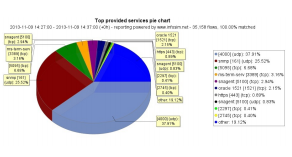 The performance of the applications your customers are using is crucial to your customer experience, as it's the experience of the service that is paramount to the success of your business. Being able to measure the performance of applications, used by both public and private cloud customers, and provide monitoring dashboards and reporting of the service performance is a standard requirement for any cloud service provider.
The performance of the applications your customers are using is crucial to your customer experience, as it's the experience of the service that is paramount to the success of your business. Being able to measure the performance of applications, used by both public and private cloud customers, and provide monitoring dashboards and reporting of the service performance is a standard requirement for any cloud service provider.
APM products in the market place today have a wealth of functionality that brings additional complexities and ultimately results in a costly operating model. StableNet’s® APM functionality is already integrated with other enriched capabilities that make troubleshooting and identification of root cause so much easier from a single product.
Many applications today are browser, or Web‐based, applications. StableNet® has the ability to configure pre-defined scripts that can interact with a Web‐based application and perform a suite of metric tests that are collected and analyzed for specific performance‐related, and problem determination monitoring and reporting requirements.
- Web‐based Application Monitoring

- URL\Web Page Availability and Response Monitoring
- Historical Performance
- Performance Trending
- Performance Analysis
Your business customers rely on Web‐based applications to generate sales, present market research, or provide services. The complexity of these applications means they are susceptible to performance issues and failures; therefore, it is imperative from the user experience that the application functionality be monitored in a way where the deployment of transactional script-‐based monitoring enables:
- Performance Monitoring of each Application Transaction Step
- Identify Application Performance Congestion and failures
- Optimize User Experience
- Root-‐Cause-Analysis through Event & Alarm Notification Management
Deployment of APM will drive down your MTTR (Mean-Time-to-Repair) and provide you the comfort of knowing your customers are experiencing great service application performance. It will also provide you with the confidence to offer customer application performance-based SLAs (Service Level Agreements) that will drive existing customer sales and increase your customer base.
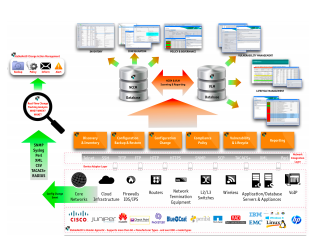 Conclusion
Conclusion
There are many aspects to managing a cloud hosting environment. Stacking up individual element managers to perform specific functions for your OSS (Operational Support Systems) requirements is both costly in terms of capital expenditure outlay; for example, platform, software, annual software support for each element management system, and operational expenditure in terms of increased headcount and tool specialization for each system. The strategy for the 21st century is to deploy unified management solutions, whereby you maximize the functionality capabilities from a single system, thus driving down both your capital and operational expense. More importantly though is the benefit it provides. A unified management platform is a suite of multi-functional capabilities in a single product that therefore has seamless integration and cross-correlation built-in, enabling what we class as True-Visualization of your entire End-to-End cloud hosting environment.
Thanks to Infosim for the article.
When you subscribe to the blog, we will send you an e-mail when there are new updates on the site so you wouldn't miss them.





Comments